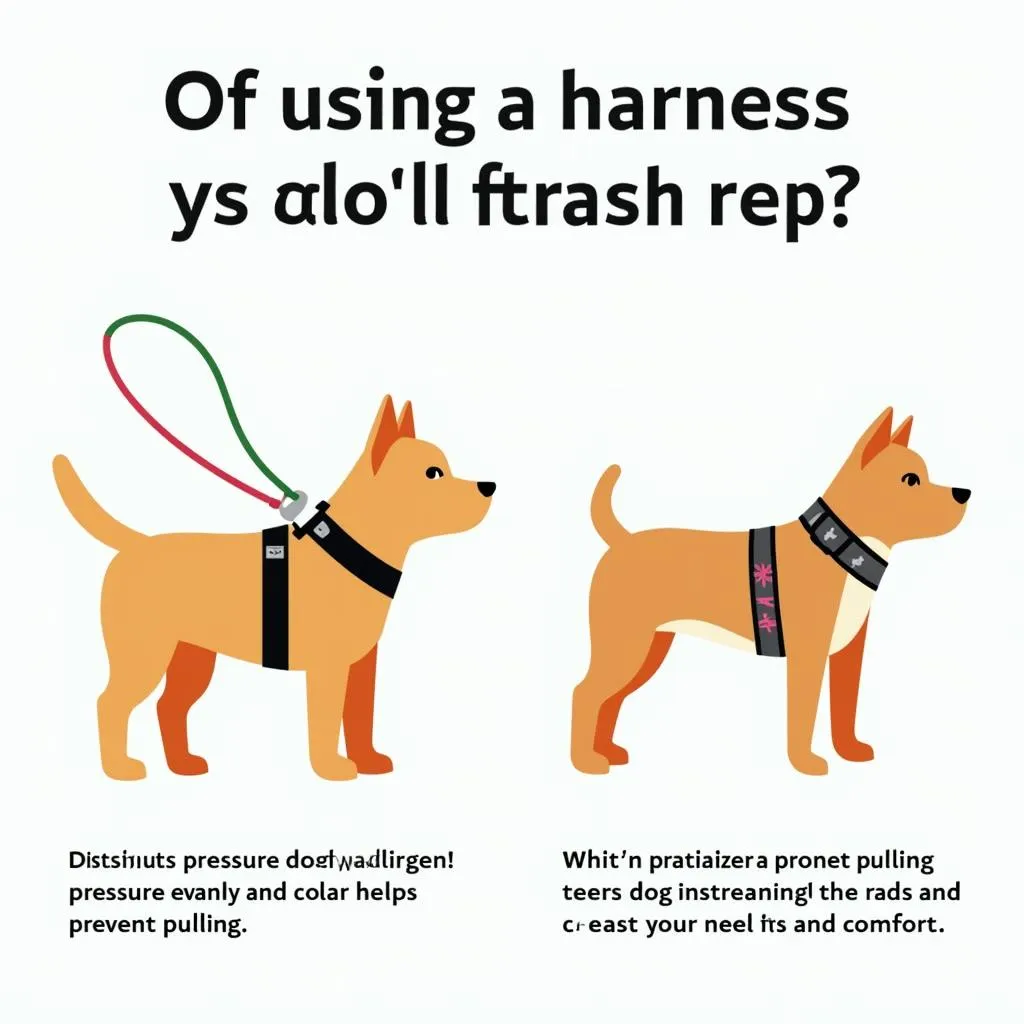“Con chó nhà tôi cứ kéo dây xích suốt, làm sao tôi có thể huấn luyện nó điềm tĩnh hơn?” – you might be asking yourself. This is a common concern among dog owners, and it’s not just about the frustration of a tug-of-war with your furry friend. The “drag line” behavior, as it’s known, can actually be a sign of deeper issues. Let’s dive into what it means, why it happens, and what you can do about it.
What Is “Drag Line” Behavior?
“Drag line” behavior describes a dog’s tendency to pull on the leash while walking, often with a strong, insistent force. It’s not simply a dog that is enthusiastic about walking – it’s more about a lack of control and focus.
Why Do Dogs Drag Line?
There are several reasons why dogs might drag line. It’s important to understand the underlying cause to address it effectively:
1. Lack of Training:
Dogs are not born knowing how to walk nicely on a leash. Just like us, they need to be taught. If a dog has not been trained properly, they may pull on the leash out of excitement, curiosity, or simply because they don’t know any better.
2. Excitement or Reactivity:
Some dogs may drag line because they are overly excited to explore their surroundings, see other dogs or people, or encounter interesting smells. They might pull ahead because they want to get closer to something they find exciting.
3. Lack of Physical Exercise:
A bored or pent-up dog might drag line because they have excess energy that needs to be released. Just like humans, dogs need exercise to stay healthy and well-behaved.
4. Underlying Medical Conditions:
In some cases, a dog’s drag line behavior can be a symptom of a medical condition. For example, a dog experiencing pain or discomfort might pull on the leash to avoid certain movements or areas.
How to Prevent and Correct Drag Line Behavior?
1. Training with Consistency:
The key is to train your dog with patience and consistency. Teach your dog basic commands such as “heel,” “stay,” and “sit,” and reward them with treats and praise for good behavior. You can use a “clicker” to mark the desired behavior, which can be especially helpful for training.
2. Harness vs. Collar:
The type of leash you use can also make a difference. A harness can help distribute the pressure more evenly, making it easier for the dog to walk comfortably without pulling.
3. Socialization and Exposure:
Exposure to different environments, people, and other dogs can help a reactive dog become more confident and less likely to drag line. Slowly and gradually introduce your dog to new stimuli, rewarding calm behavior.
4. Regular Exercise:
Ensure your dog gets enough physical and mental exercise to reduce their energy levels. A tired dog is less likely to drag line.
When to Seek Professional Help:
If your dog’s drag line behavior is severe, persistent, or accompanied by other behavioral issues, it’s essential to seek help from a professional dog trainer or behaviorist. They can assess the situation, develop a customized training plan, and rule out any underlying medical conditions.
Common Questions About “Drag Line” Behavior:
What are some common mistakes dog owners make when addressing drag line behavior?
- Punishing: Hitting or yelling at a dog for pulling on the leash is not effective. It can lead to fear and anxiety, making the behavior worse.
- Using Retractable Leashes: Retractable leashes are often a culprit for drag line behavior. They can make it difficult to control the dog, and they can even cause injuries if the dog suddenly pulls back on the leash.
Can I use a shock collar to stop my dog from pulling?
While shock collars are commonly used, many trainers and veterinarians consider them cruel and potentially harmful. They can cause pain and anxiety, and they can actually worsen the drag line behavior.
How can I make my dog enjoy walks more?
Make walks fun and rewarding for your dog by:
- Changing Your Route: Explore different areas to keep things interesting.
- Using Treats: Reward your dog for walking calmly by your side with delicious treats.
- Playing Games: Incorporate games such as “find the treat” or “hide-and-seek” into your walks to keep your dog engaged.
Remember:
Patience and consistency are key to addressing drag line behavior. With the right training and techniques, you can teach your dog to walk nicely on a leash and enjoy happy, safe walks together.
 Dog walking training: harness vs leash
Dog walking training: harness vs leash
For more advice and support, contact our team at i love my pet! We’re available 24/7 to help you and your furry friend. Call us at 0372960696, email us at [email protected], or visit us at 260 Cầu Giấy, Hà Nội.
Let’s create a happy and harmonious walking experience for both you and your beloved canine companion!
Leave a Reply
You must be logged in to post a comment.